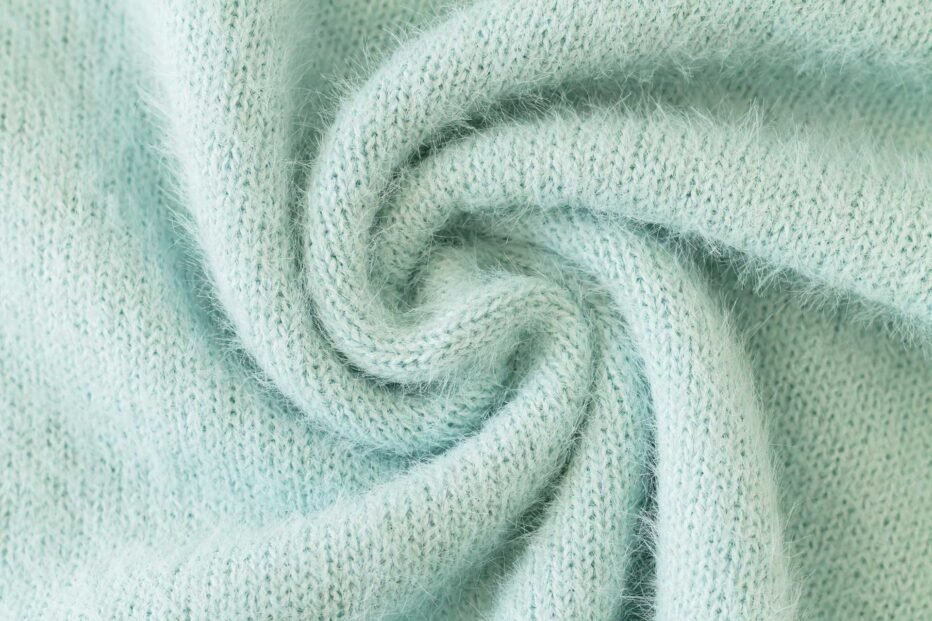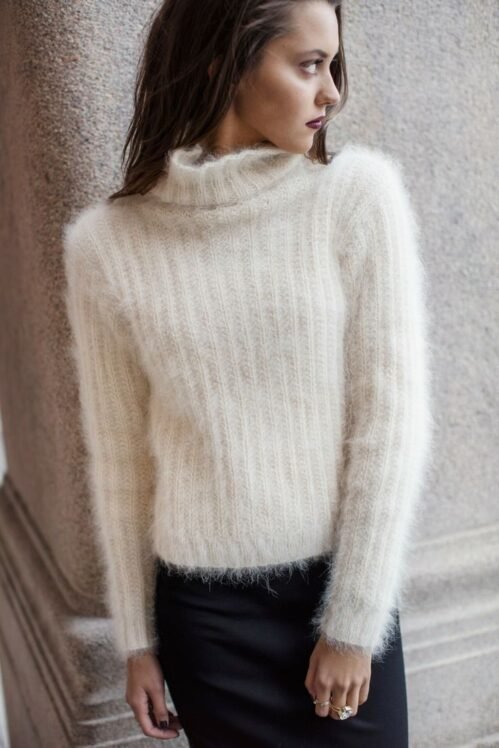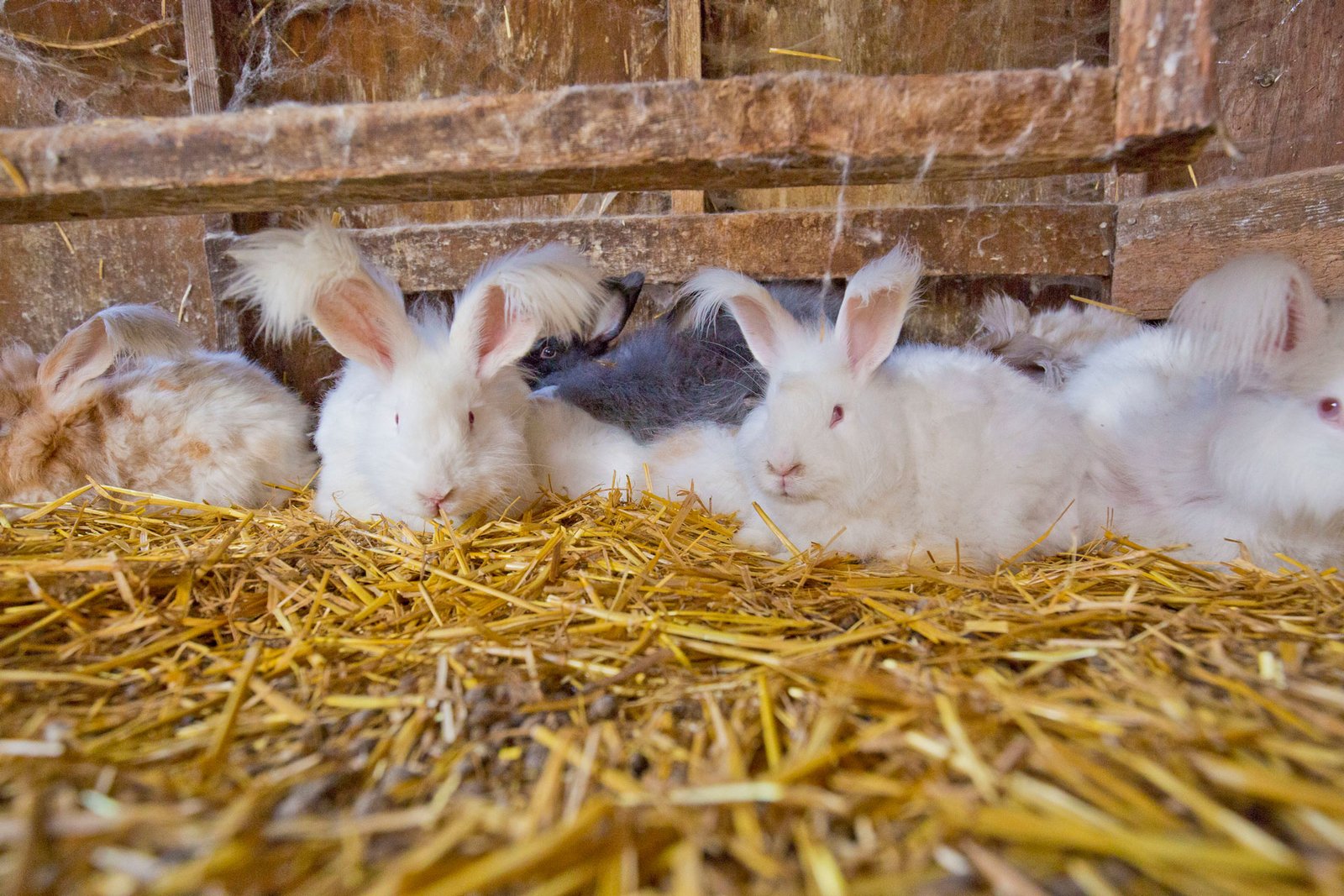Angora wool comes from the fur of Angora rabbits. The fiber has a very thin, fine diameter and has a halo-like effect of fur around each strand, which creates a shiny quality on any items made with Angora.

Description
A soft animal fiber that has a floaty and fluffy feel.
Angora is a fine and soft fiber of the Angora rabbit, which has very long and flexible hair. Various colors are available, including pure white, gray, brown, and black. Garments knitted from Angora fiber will feel like fur. It is also often blended with wool to enhance its elasticity.
Background
Story
Angora wool comes from the fur of Angora rabbits. The fiber has a very thin, fine diameter and has a halo-like effect of fur around each strand, which creates a shiny quality on any items made with Angora. The halo essentially refers to the yarn’s fluffiness, so each strand in a finished product looks like it has a layer of fluff surrounding it. Angora is soft and luxurious like cashmere or alpaca, and it is often blended with other types of wool to add softness and its signature halo.
Manufacturing
There are five different Angora rabbit breeds: English, French, German, Satin, and Giant. Each breed of Angora rabbit produces a slightly different type of wool.
- English Angora: English Angora is the smallest of the angora rabbit breeds, and it has extremely fine guard hairs, which are generally coarser hairs that protect the animals coat. Guard hairs aren’t generally used for the final textile.
- French Angora: French Angora rabbits have thicker guard hairs, which means their undercoat is more woolly, but since they molt naturally, the fibers can be easily plucked around the guard hairs. The animal has a great halo fur, meaning it has extra fluff, and French Angora’s fur is great for hand spinners as a result.
- Satin Angora: The Satin Angora doesn’t produce as much wool as the French and English Angora, but the coat is very shiny, and the fiber is great for spinning.
- Giant Angora: the Giant Angora is a biggest Angora, and it produces the most fiber per year. However, the Giant Angora doesn’t naturally molt so its fur must be shorn.
- German Angora: German Angoras are very similar to the Giant Angoras, in that they produce a large volume of wool and do not naturally molt.

Expertises
Characteristic
- Lightweight
- Durable, remains strong when wet
- Breathable and wearable all year round
- Absorbs and releases moisture very quickly
- Takes dye well but prone to discolor after wash
- Not stable and tends to shrink
- Prone to wrinkle
- Does not gather static electricity
How Is Angora Wool Produced?
Angora rabbits molt three or four times a year, and Angora wool is gathered during moulting season. Harvesting Angora involves plucking or shearing the rabbits on Angora farms. Plucking is a superior technique, as it ensures fewer guard hairs are retrieved, which add roughness to the coat. Also, the fur is not as matted when plucked; however it’s a very time consuming process so some farmers resort to shearing.
The rabbits need to be groomed once or twice a week so matting and felting doesn’t occur.
What Are the Uses for Angora Wool?
Angora is a gorgeous decorative textile that creates a beautiful effect in garments and home items.
Knitwear. Angora wool is a favorite fiber for knitwear, as it adds its luxurious halo effect, or fluffy layer, to the garment or accessory. From an angora sweater to mittens, knitters prefer working with angora wool because it adds a beautiful effect with its fluffy halo. However, since angora does not have a lot of elasticity, it is generally mixed with other fibers, like alpaca or sheep’s wool, to give added stretch and bulk.
Home decor. Angora can also be used for home decorations, from throw pillows to blankets. The fiber is typically only used for decorative items and incorporated with other fibers, as angora is very expensive.
What Is the Difference Between Angora Wool and Mohair
The main difference between mohair and Angora is Angora wool comes from the Angora rabbit, while mohair wool comes from the Angora goat. Both are very strong and resilient with a silky and soft nature.
Social
12k followers
30k likes
Youtube
22k subscribers
8k followers
Have a project in mind?
If you have a great idea, reach out to me. Whether it is a small or big project, I will listen first and get back to you with a plan.

